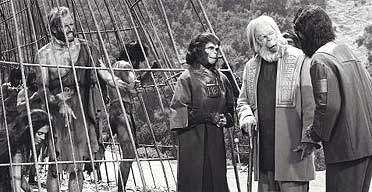Sometimes all it takes is "coming up for some air" before plunging into the deep again, or taking time to smell the flowers that have been there all along. Or looking at images like these:





All photos (plus that witty caption) from Cute Overload
Caped wonders with super powers have been created throughout history during times when people were in dire need of "heroes". They could fly or do a Houdini from the arch-rival's snare. But, these heroes stay on the comic book (or the silver screen). Hence, we in the real world face challenges ourselves--sans super powers. Whether it's families breaking apart or declining literacy in the country, it is we who answer the call from where we are, with what we have.






Amnesty International is shocked that the governing socialists in Spain have put forward legislation to grant great apes 'human rights'. The same government which stripped from unborn human children the right to life and permits destructive research on human embryos, has put forward legislation to grant great apes the rights the rights to life, freedom and to not being tortured, according to a report by Deutsche Presse-Agentur.
The legislation would prohibit the 'enslaving' of gorillas, chimpanzees, orangutans and bonobos.
Ludwig Minelli, founder of Dignitas, an assisted suicide “clinic” in Zurich has announced that he is planning on opening a chain of suicide facilities in Switzerland. So popular has his death service become that at least 42 Britons have gone there to commit suicide.
Under British law, aiding a person’s suicide is a criminal offence punishable by up to 14 years in prison, but there is no way officials can stop anyone from going to Switzerland where laws allow it.
Minelli told Sunday Times Magazine this weekend, “We never say no.”

Dear Manolo,Help me! In May I’m accompanying my boyfriend to the christening of his niece in Denver. This will be the first time I’ll be meeting his very Catholic, very conservative parents.
Shannon
Manolo says, the Manolo’s friend she is indeed most lucky to be able to visit the beautiful mountains of the Rockies in the springtime. Do not forget to pack the hiking boots so that if things with the family begin to go bad, there is the possibility of the long walk alone through the alpine flowers.
Ha! The Manolo he jokes.
Indeed the Manolo suspects that this family of the boyfriend they are the wonderful peoples, for in the fact, did they not raise the wonderful son? And if he is not the wonderful son, why is the Manolo’s friend going with him to Denver?
Read Manolo's advice in full here
As for you, my dear, you must stop confusing pity with romantic love; that's a disorder in your feelings. Some guys have a soft spot for broken girls. You, I suspect, have a soft spot for broken guys. What a man with broken emotions needs is a counselor, not a wife; what a woman with an extra-soft heart needs is a husband, not a patient. All those novels and movies where the girl marries a damaged guy and then "fixes" him are frauds. The marital relationship is one thing; the therapeutic relationship is another.

For many workers, an iPod, loaded with favorite music, is a welcome way to block out distractions. But to a boss trying to get an employee's attention, those white ear buds can represent a barrier.
"Sometimes they don't hear their telephones ringing," says Lee Rosen, president of Rosen Law Firm in Raleigh, N.C. "That can be a problem. But all in all, the music adds to their ability to be productive far more than it detracts from it." Because his employees work in cubicles in an open room, many use iPods or play music through their computer to create an isolated environment. He takes the approach that they should do whatever is necessary to get the job done.


This article from the Telegraph is so utterly depressing:
The average British woman worries about the size and shape of her body every 15 minutes ... Research among 5,000 women with an average age of 34 found that just two per cent were happy with their body.
I suppose with the constant media glare on glamour and how one looks, what else are women to be thinking of?
Many respondents were dissatisfied with every part of their own appearance - 87 per cent hated their "podgy thighs", 79 per cent were unhappy with their waist, 65 per cent were disappointed with the size and shape of their breasts, the same number were unhappy with their feet (65 per cent), and 59 per cent were unhappy with their face. More than half of those polled were even disappointed with their hands and fingers.
Obviously, a huge part of this is the fault of contemporary fashion. If women weren't expected to show virtually all their flesh (and the actual shape of what little remains hidden) then these minutiae wouldn't matter -- to anyone, least of all women. Try using extra fabric, try buying a size larger, try draping horizontally -- and then for heaven's sake stop obsessing!
The last statement says it all:
Women, you are made for so much more than this.
Read the whole piece here
And here's something from the CBS News archives about the retouching that is done to practically every photo of models on magazine pages -- thanks to technology's magic.
[More cover girl Jamie Lee Curtis] says the fraud is perpetrated by magazine editors who rely too heavily on photo retouching - which gives models and actresses a “digital diet” long after the photo shoot is over.
Kate Betts, former editor-in-chief of Harper’s Bazaar, says most fashion pictures are retouched nowadays. But what can a good retoucher do?
“A good retoucher can basically make the person in the picture look better, enhance the way they look,” says Betts, who was also a former top fashion editor at Vogue. “They can do anything. They can open eyes wider, make them brighter, change the shape, contour the face a lot.”
Read "Re-modeling for Perfection" here
Why is RU-486, the abortion pill, still on the market?
This week, a jury in New Jersey awarded $4.5 million in damages to a man who was found to have suffered a heart attack after taking the arthritis drug Vioxx.
In late March, Bausch and Lomb pulled its lens solution from shelves and launched an investigation
to determine why customers contracted a rare fungal infection from using it.
While rapid response has followed these drug complications, at least seven women have died from taking RU-486, and the dangerous drug is still available for purchase.